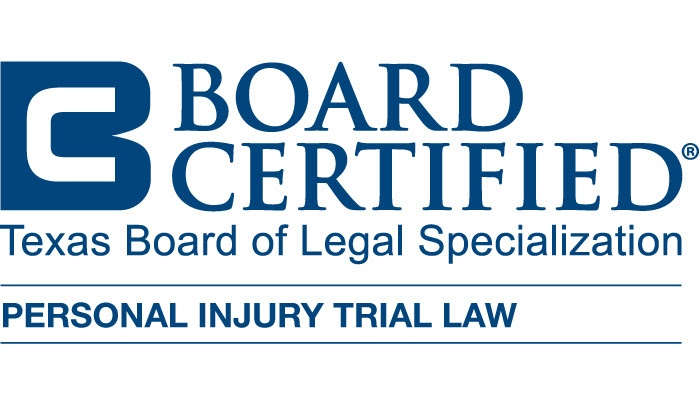Experiencing a car accident can be a stressful and costly event, not only due to the immediate damage but also because of the long-term impact on your vehicle’s value. Even after thorough repairs, a vehicle’s market value often decreases simply because it has been involved in an accident. This reduction in value is known as “diminished value.” Understanding your rights and the potential to recover these losses is crucial.
At Willumsen Law Firm, we are dedicated to helping you navigate the complexities of diminished value claims. In this blog post, we will explore what diminished value claims entail, how they are assessed, and what you need to do to ensure you receive the compensation you deserve. Whether you are dealing with your insurance company or the at-fault party’s insurer, being informed about diminished value claims can make a significant difference in your financial recovery post-accident.
What is a Diminished Value Claim?
A diminished value claim refers to the compensation sought for the reduction in a vehicle’s market value after it has been repaired following an accident. The rationale behind this claim is that a vehicle with an accident history is typically worth less than an identical vehicle with no such history, even if the repairs are flawless.
Why Cars in an Accident Suffer Diminished Value Even After Being Repaired
When a vehicle is involved in an accident, its market value typically decreases, even after it has been repaired to its original condition. This reduction in value is referred to as diminished value. There are several reasons why cars suffer diminished value post-repair, which can be attributed to market perceptions, potential structural weaknesses, and the quality of repairs.
Market Perception
Understanding the intricacies of DUI law in Georgia and the potential for plea deals necessitates a solid foundation of legal knowledge. This is why having an experienced DUI attorney is essential. DUI laws and plea bargaining options can be complex and vary widely. An attorney will guide you through this process, helping you understand your options. They can also negotiate the best possible outcome, potentially reducing the charges and associated penalties. Furthermore, ensuring that your legal rights are upheld throughout the legal process is crucial. An experienced attorney will advocate on your behalf. Although Georgia does not have a specific statute for “wet reckless” pleas, it is still possible to negotiate DUI charges down to reckless driving. This can offer significant benefits, including reduced penalties and less severe long-term consequences.
Potential Structural Weaknesses
Accidents can compromise the structural integrity of a vehicle, and even high-quality repairs might not fully restore it to its original factory condition. This raises concerns about the car’s ability to protect occupants in future collisions. Buyers may worry about the long-term performance and safety of a vehicle that has been in an accident. They might question whether the repaired vehicle will function as well as it did before the accident, especially in critical areas like the frame, suspension, and safety systems.
Quality of Repairs
The quality of repairs significantly impacts a vehicle’s appearance and market value. If repairs are not executed flawlessly, visible signs such as mismatched paint, uneven body panels, or other imperfections can detract from the vehicle’s overall aesthetic and value. These flaws are often noticed by buyers and appraisers, which can further reduce the vehicle’s market value. The use of non-original equipment manufacturer (OEM) parts in repairs can lead to diminished value. Non-OEM parts may not fit as well, last as long, or perform as reliably as OEM parts, contributing to a lower resale value.
Insurance and Resale Implications
Insurance companies may provide lower payouts for vehicles with accident histories, even if they have been repaired. This reflects the diminished value recognized within the industry. This diminished value also impacts resale value, making it more challenging for owners to sell their vehicles at a price comparable to similar models with no accident history.
Cars suffer diminished value after being in an accident due to market perceptions, potential structural weaknesses, and the quality of repairs. Even when repairs restore the vehicle to its pre-accident condition, the stigma of an accident history, concerns about structural integrity, and the visibility of repairs all contribute to a lower market value. Understanding these factors is crucial for vehicle owners seeking to manage their expectations and pursue appropriate compensation through diminished value claims.


Understanding the Three Types of Diminished Value
There are three primary types of diminished value: immediate diminished value, inherent diminished value, and repair-related diminished value. Each type captures a different aspect of how a vehicle’s value can be affected post-accident.
Immediate Diminished Value
Immediate diminished value refers to the reduction in a vehicle’s market value immediately after an accident but before any repairs are made. This type of diminished value represents the difference between the vehicle’s pre-accident value and its value immediately after the accident, in its damaged state. It captures the raw impact of the accident on the vehicle’s market value, reflecting the market’s perception of the vehicle’s worthwhile it remains in a damaged condition. This diminished value is short-lived, as it changes once repairs begin and the vehicle is restored. For example, if a car worth $20,000 is involved in an accident and its value drops to $10,000 immediately afterward, the immediate diminished value is $10,000. This value only exists until repairs start.
Inherent Diminished Value
Inherent diminished value, also known as stigma damage, represents the loss in value due to the vehicle’s accident history, regardless of the quality of repairs. This is the most recognized and significant type of diminished value, reflecting the market’s reluctance to pay full price for a vehicle that has been in an accident.
Key Points
Market stigma affects vehicles even after they’ve been restored to their pre-accident condition. Potential buyers often perceive these vehicles as less valuable due to their accident history. This results in an inherent diminished value that persists long-term, despite high-quality repairs. Such cases are frequently claimed in insurance settlements and lawsuits. For example, a car valued at $20,000 before an accident might only be worth $17,000 after repairs, as buyers are aware of its accident involvement. The inherent diminished value in this scenario is $3,000.
Repair-Related Diminished Value
Repair-related diminished value occurs when the quality of repairs is substandard or visible, further reducing the vehicle’s market value. This can happen if the repairs do not fully restore the vehicle to its pre-accident condition or if there are visible signs of damage or repair.
Key Points
The quality of repairs is crucial as it determines the effectiveness and visibility of the work done on the vehicle. Residual damage, which refers to any remaining signs of damage or poor workmanship, also plays a significant role. This type of diminished value can often be documented through repair records and inspections. For example, if a car repaired after an accident shows mismatched paint, misaligned body panels, or other signs of poor-quality work, its value might be lower than a well-repaired vehicle. If the car’s value drops by $2,000 due to such issues, this amount represents the repair-related diminished value.
Understanding the different types of diminished value is crucial for vehicle owners seeking compensation after an accident. Immediate diminished value reflects the drop in value before repairs, inherent diminished value captures the market stigma associated with the accident history, and repair-related diminished value addresses losses due to poor-quality repairs.
My focus is to give a voice to families who have suffered a wrongful death or a serious injury to a family member caused by an 18-Wheeler, commercial truck, or a drunk driver. Contact us today, we can help you.Helping Injury Victims for Over 25 Years
When Filing Diminished Value Claims is Appropriate
Filing a diminished value claim is appropriate under several circumstances. If another driver is at fault for the accident, you can file a diminished value claim against their insurance company, as Texas law allows you to seek compensation for diminished value from the at-fault party’s insurer. Additionally, if you have collision coverage, you might be able to file a diminished value claim with your own insurance company. However, this depends on the terms of your policy and Texas insurance law, which may have specific exclusions for diminished value claims.
It’s generally more practical to file a diminished value claim if the accident has caused a significant reduction in the vehicle’s value, as minor damages might not result in a substantial claim. To support a diminished value claim, you must provide proper documentation, including detailed repair records, an appraisal of the vehicle’s value before and after the accident, and any other evidence that demonstrates the loss in value.
Steps to Filing a Diminished Value Claim in Texas
When your vehicle has been involved in an accident, even after repairs, its market value may decrease due to its accident history. In Texas, you have the right to file a diminished value claim to seek compensation for this loss. Here are the steps to filing a diminished value claim in Texas:
Assess the Diminished Value of Your Vehicle
To accurately assess the diminished value of your vehicle, start by hiring a professional appraiser. This expert can evaluate your vehicle’s pre-accident and post-repair value, providing a detailed report that quantifies the diminished value. This report will serve as crucial evidence for your claim. Additionally, you can use online tools and resources, such as Kelley Blue Book or NADA Guides, to estimate your vehicle’s market value before and after the accident.
Gather Documentation
To gather documentation for your vehicle accident, start by obtaining a copy of the accident report from the police or relevant authorities. This document provides an official record of the incident. Next, collect all repair invoices, receipts, and any communication with the repair shop. Detailed repair records will show the extent of the damage and the repairs made. Additionally, obtain a vehicle history report from services like Carfax or AutoCheck. This report will show the accident history and is often reviewed by potential buyers, affecting the vehicle’s market value.
Notify the Insurance Company
Notify the insurance company by contacting the at-fault party’s insurer if another driver was responsible for the accident. Inform them of your intention to file a diminished value claim and provide the accident report and repair records as initial documentation. If you are dealing with your own insurance company, such as under your collision coverage, notify them of your intent to file a diminished value claim as well.
Submit the Diminished Value Claim
To submit a diminished value claim, start by preparing a demand letter to the insurance company. This letter should outline your claim and include all necessary supporting evidence. Attach the appraiser’s report, accident report, repair records, and any other relevant documentation. Clearly state the amount you are seeking as compensation for the diminished value of your vehicle. By providing thorough and detailed information, you strengthen your case for fair compensation.
Negotiate with the Insurance Company
When negotiating with an insurance company, the process typically begins with the insurance company’s response. They will review your claim and may respond with an offer. Often, this initial offer is low, or they might deny the claim altogether, as their goal is to minimize payouts. At this stage, it’s crucial to engage in negotiations to reach a fair settlement. Having an experienced attorney by your side can greatly assist in these negotiations, ensuring you secure the compensation you deserve.
Consider Legal Action if Necessary
If necessary, consider taking legal action. If the insurance company fails to offer a reasonable settlement, you may need to file a lawsuit. Consult with a tort attorney to discuss the feasibility and process of taking legal action. Should you proceed with a lawsuit, prepare for court by gathering all documentation, securing expert witnesses such as the appraiser, and working closely with your attorney to build a strong case.
Filing a diminished value claim in Texas involves several steps, from assessing the loss and gathering documentation to negotiating with the insurance company and potentially taking legal action. Understanding and following these steps can significantly increase your chances of receiving fair compensation for the diminished value of your vehicle.
Related Videos
Choosing a Personal Injury Attorney
Types of Compensation in a Truck Accident Claim
Fighting for Your True Value
Diminished value claims are an essential aspect of ensuring you receive fair compensation after your vehicle has been involved in an accident. Even with top-quality repairs, your vehicle’s market value may be significantly reduced due to its accident history. Understanding the types of diminished value and the steps to filing a claim can help you navigate this complex process effectively.
If you believe your vehicle has suffered diminished value following an accident, it is crucial to act promptly and seek professional advice. At Willumsen Law Firm, our experienced attorneys are dedicated to helping you understand your rights and pursue the compensation you deserve. Contact us today for a comprehensive consultation and let us assist you in navigating your diminished value claim.



